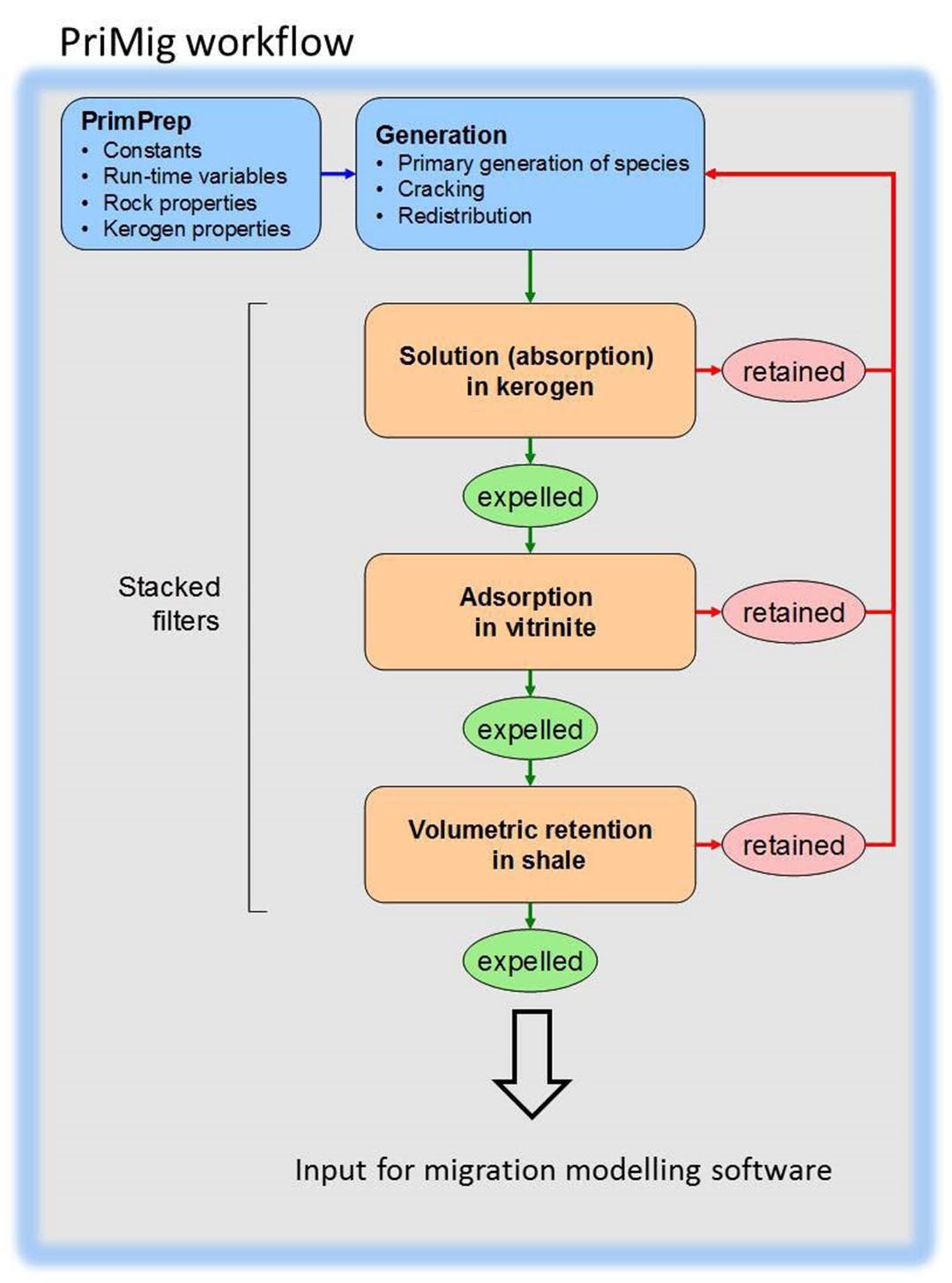This effect occurs because certain petroleum components are retained in the source rock. These may be cracked and expelled when the source rock reaches higher temperatures.
Existing models of expulsion are either purely volumetric or rely on a poorly defined retention factor.
We have developed a process-based expulsion model which assumes
- that kerogen behaves like a polymer and is able to dissolve organic compound in its structure (Polymer solution theory), and
- that some macerals contain nanopores (with radii of around 1 nm) and that molecules ”caught” in these pores behave according to the physical laws pertaining there (Dubinin-Radushkevitch theory).
The expulsion modelling software PriMig estimates the composition of expelled petroleum from kerogen data (e.g. maceral group analysis) and petroleum generation data (e.g. from pyrolysis experiments). Both a stand-alone 1D and a 3D version implemented into the migration software tool SEMI are in use.

Data flow in PriMig, showing the stacked structure of the sequential retention scheme (Ritter & Grøver, 2006)
